Text
Demystifying Entity Framework: Expert Tutorial for .NET Developers

Are you ready to simplify data access in your .NET applications? Look no further than this Entity Framework tutorial! Whether you're a beginner or seasoned developer, understanding Entity Framework is essential for efficient database interactions.
Entity Framework acts as a bridge between your application and the database, allowing you to work with database entities as regular objects in your code. No more writing complex SQL queries or worrying about database schema changes – Entity Framework handles it all for you.
In this tutorial, we'll cover the basics of Entity Framework, including setting up your project, defining data models, and performing CRUD (Create, Read, Update, Delete) operations. You'll learn about LINQ to Entities, a powerful querying language that simplifies data retrieval.
But we won't stop there. We'll dive deeper into advanced topics like eager loading, lazy loading, and optimizing performance to ensure your applications run smoothly.
By the end of this tutorial, you'll have the skills to build robust .NET applications with efficient data access layers. Say goodbye to tedious database interactions and hello to streamlined development!
Ready to get started? Head over to Entity Framework Tutorial at Tutorial and Example for step-by-step guidance and code examples.
Let's master Entity Framework together and take your .NET development skills to the next level!
0 notes
Text
Unlocking the Power of Drools: A Comprehensive Guide for Newbies

Are you ready to embark on a journey into the world of Drools? If you're new to the concept, fear not! This Drools tutorial for beginners will provide you with the basics to get started.
What is Drools, you ask? Drools is a powerful tool used for implementing business rules and logic in software applications. It allows you to define and execute these rules independently from your application's code, making it easier to manage and update them as needed.
To begin, let's understand the key components of Drools:
1. Rules: These are the heart of Drools. Rules define the conditions under which certain actions should be taken.
2. Facts: Facts are the data or objects that Drools uses to evaluate rules. They represent the current state of your application.
3. Actions: These are the tasks that Drools performs when a rule's conditions are met. Actions could include modifying data, sending notifications, or triggering other events.
Now that you have a basic understanding of Drools, it's time to dive deeper. Start experimenting with writing your own rules and testing them out. Don't worry if it feels overwhelming at first – practice makes perfect!
For more detailed guidance and examples, check out TAE's comprehensive Drools tutorial for beginners at Tutorial and Example. Happy coding!
0 notes
Text
Unlocking the Power of Drupal: Step-by-Step Tutorial for Web Development
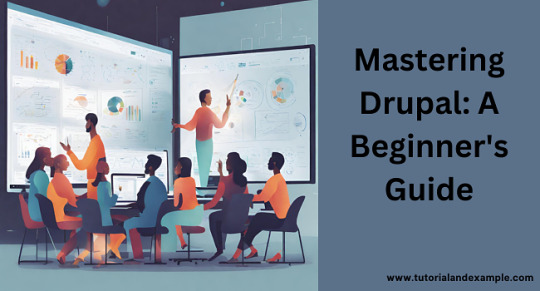
Are you eager to build your website but feeling overwhelmed by the complexities of web development? Fear not! In this Drupal tutorial, we'll take you on a journey from novice to pro in no time.
What is Drupal, you ask? Well, Drupal is a powerful content management system (CMS) that allows you to create, manage, and organize your website's content with ease. Whether you're a blogger, entrepreneur, or small business owner, Drupal empowers you to craft a stunning online presence without the need for coding expertise.
Let's dive into the basics first. With Drupal, you can create and customize various types of content such as articles, blogs, and forums effortlessly. Its user-friendly interface makes navigation a breeze, even for beginners.
But that's not all! Drupal offers a plethora of themes and modules to enhance your website's functionality and aesthetics. From responsive design to search engine optimization (SEO), Drupal has got you covered.
Ready to take your skills to the next level? Our Drupal tutorial will walk you through advanced techniques like customizing themes, optimizing performance, and managing user permissions. With dedication and practice, you'll soon be wielding Drupal like a pro.
So, what are you waiting for? Embrace the world of Drupal and unleash your creativity today!
For more in-depth guidance and tutorials, visit: Tutorial and Example
0 notes
Text
Effortless Docker Mastery: The Ultimate Tutorial for Developers

Are you ready to delve into the world of Docker? Let's embark on this journey together with our Docker Tutorial.
First things first, what is Docker? Imagine it as a magic box where you can pack up your application along with all its dependencies. This box, called a container, can run anywhere! Isn't that amazing?
To start, you'll need to install Docker on your computer. Don't worry; it's a simple process. Once you have Docker installed, you can create your first container. Think of it as building your own virtual world for your application to live in.
Now, let's talk about Docker images. These are like blueprints for your containers. You can find ready-made images on Docker Hub or create your own.
Next up, Dockerfile. This is where the magic happens. With a Dockerfile, you can define exactly what goes into your Docker image.
Once everything is set up, it's time to run your container. Just a simple command and your application is up and running in its cozy little container.
But Docker is not just about running applications; it's also about managing them. You can start, stop, and even scale your containers with ease.
And that's just the tip of the iceberg! With Docker, the possibilities are endless.
So, are you excited to get started? Head over to our Docker Tutorial on TutorialAndExample.com to begin your journey into the world of Docker!
0 notes
Text
Unlock the Secrets of Computer Programming: A Beginner's Tutorial

Are you curious about computer programming but find it daunting? Fear not! Let's embark on a journey to demystify the world of coding through our comprehensive Computer Programming Tutorial.
Firstly, what is computer programming? It's like giving instructions to a computer to perform tasks. Think of it as teaching your dog new tricks, but instead, you're instructing a computer!
Our tutorial starts from the basics. We'll introduce you to fundamental concepts like variables, loops, and conditions. These are the building blocks of any program.
Next, we'll dive into different programming languages such as Python, Java, and JavaScript. Don't worry; you don't need to learn them all at once! Start with one and gradually expand your repertoire.
Once you've grasped the basics, we'll guide you through more advanced topics like object-oriented programming and algorithms. These concepts will help you write more efficient and sophisticated code.
But remember, learning to code is a journey, not a race. Take your time, practice regularly, and don't be afraid to make mistakes. They're all part of the learning process!
So, whether you're a complete beginner or looking to brush up on your skills, our Computer Programming Tutorial has got you covered. Start your coding journey today at Tutorial and Example.
0 notes
Text
Demystifying Computer Fundamentals: Your Ultimate Tutorial Guide

Hey there! Ever wondered how computers work? Let's dive into the fascinating world of Computer Fundamentals Tutorial!
First things first, what are computer fundamentals? Well, they're the basic building blocks of how computers operate. From understanding hardware (the physical parts like the CPU and keyboard) to software (the programs that make computers function), this tutorial covers it all!
Let's start with hardware. Imagine a computer as a house: the hardware is like the walls, floors, and roof. It includes the CPU, which acts as the brain, and the keyboard and mouse, which are like your hands and fingers.
Next up, software. Think of software as the instructions that tell the computer what to do. Operating systems like Windows or macOS are the big bosses, managing everything. And then there are applications like Word or Chrome, which are the tools you use to get stuff done.
But wait, there's more! We'll also explore data representation (how computers understand and process information) and networking (connecting computers together to share resources).
So whether you're a tech newbie or looking to brush up your skills, this Computer Fundamentals Tutorial has got you covered. Ready to unlock the secrets of computing? Let's get started with a Tutorial and Example!
0 notes
Text
Mastering the Basics: A Comprehensive CCNA Tutorial for Beginners

Are you fascinated by computer networks? Do you want to learn how to configure and troubleshoot them? Then, you're in the right place! Welcome to our CCNA Tutorial, where we'll walk you through the fundamentals of networking step by step.
First things first, what is CCNA? CCNA stands for Cisco Certified Network Associate. It's a certification program offered by Cisco, a leading company in networking technologies. Achieving CCNA certification demonstrates your ability to install, configure, operate, and troubleshoot medium-sized networks.
In our CCNA Tutorial, you'll learn everything you need to know to become proficient in networking. We'll start with the basics, covering topics like IP addressing, subnetting, and network protocols. Then, we'll move on to more advanced concepts such as routing, switching, and network security.
Throughout the tutorial, we'll provide clear explanations, practical examples, and hands-on exercises to help reinforce your learning. Whether you're a complete beginner or looking to advance your networking career, our CCNA Tutorial has something for everyone.
Ready to embark on your journey to becoming a networking expert? Dive into our CCNA Tutorial today at Tutorial and Example and start mastering the essentials of networking!
0 notes
Text
Demystifying CCNP: Your Beginner's Guide to Networking Success
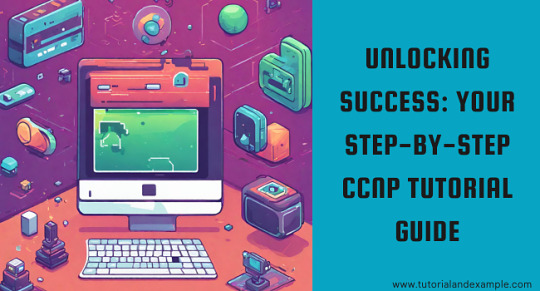
Are you intrigued by the world of networking but unsure where to start? Look no further than the CCNP Tutorial! Whether you're a beginner or seasoned IT professional, mastering the Cisco Certified Network Professional (CCNP) skills can open doors to lucrative career opportunities.
What is CCNP, you ask? CCNP stands for Cisco Certified Network Professional. It's a certification program offered by Cisco Systems, a global leader in networking solutions. CCNP equips you with the knowledge and skills needed to design, implement, and troubleshoot complex enterprise networks.
So, what can you expect from the CCNP Tutorial? This comprehensive guide covers everything from the basics of networking to advanced concepts like routing, switching, and network security. With easy-to-follow explanations and practical examples, you'll gain a deep understanding of how networks function and how to optimize their performance.
Whether you're aiming to advance your career or simply expand your knowledge, the CCNP Tutorial is your roadmap to success in the world of networking. So, why wait? Dive in today and unlock the doors to endless possibilities in the IT industry!
For more detailed tutorials and resources on mastering CCNP skills, visit Tutorial and Example.
Remember, the journey to becoming a networking pro starts here!
0 notes
Text
A Beginner's Guide to Chef Tutorial: Simplifying Infrastructure Management
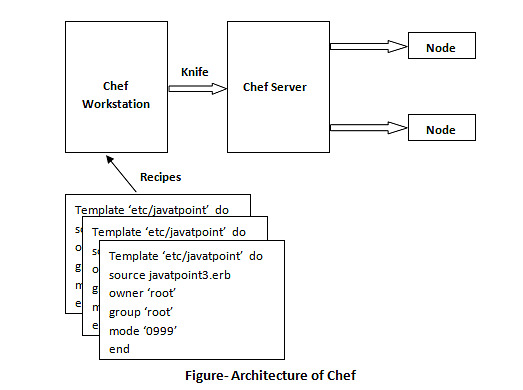
Are you a tech enthusiast looking to streamline your infrastructure management process? Look no further than Chef Tutorial! In this comprehensive guide, we'll break down everything you need to know about Chef and how it can revolutionize your workflow.
Firstly, what is Chef? Chef is a powerful configuration management tool that allows you to automate the deployment and management of your infrastructure. With Chef, you can define your infrastructure as code, making it easier to manage and scale your systems efficiently.
So, how does Chef work? It follows a simple yet effective process. You define your infrastructure requirements using code in recipes and cookbooks. Chef then takes care of the rest, ensuring that your systems are configured according to your specifications.
But that's not all! Chef also simplifies the process of deployment, making it easy to roll out updates and changes across your infrastructure with minimal effort. Plus, its user-friendly interface makes it accessible to both beginners and seasoned professionals alike.
In conclusion, Chef Tutorial is your go-to resource for mastering infrastructure management. Whether you're a beginner or an experienced user, Chef has something to offer everyone. So why wait? Start simplifying your workflow today with Chef Tutorial at Tutorial and Example!
0 notes
Text
Hands-On Learning: Dive into Automation Anywhere with Our Interactive Tutorial

Are you tired of spending countless hours on repetitive tasks? Say goodbye to manual labor and hello to efficiency with Automation Anywhere Tutorial. In this tutorial, we'll guide you through the basics of automation and how to leverage the power of Automation Anywhere to streamline your workflow.
Firstly, let's understand what automation is all about. Automation is the process of using technology to perform tasks automatically, without human intervention. With Automation Anywhere, you can automate a wide range of tasks, from data entry and report generation to complex business processes.
To get started, you'll need to download and install Automation Anywhere's software. Once installed, you can begin creating your automation tasks using the intuitive drag-and-drop interface. Don't worry if you're not a coding expert – Automation Anywhere makes it easy for anyone to automate tasks with its user-friendly design.
Next, explore the various features and functionalities of Automation Anywhere, such as task recording, bot creation, and scheduling. With these tools at your disposal, you can create powerful automation solutions tailored to your specific needs.
By mastering Automation Anywhere, you'll not only save time and effort but also improve accuracy and consistency in your work. Ready to revolutionize your workflow? Dive into our comprehensive Automation Anywhere Tutorial now!
For more detailed guidance and tutorials, visit: Tutorial and Example
0 notes
Text
Building Scalable Applications with AWS Lambda: A Complete Tutorial
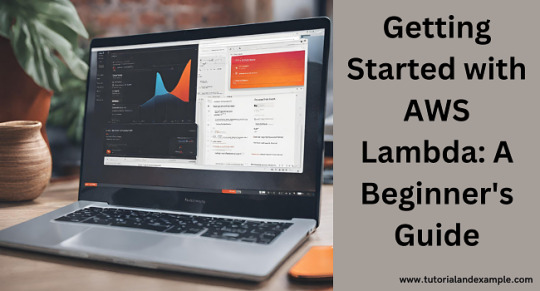
Are you curious about AWS Lambda but not sure where to begin? Look no further! In this AWS Lambda tutorial, we'll walk you through the basics in simple terms.
AWS Lambda is like having a magic wand for your code. Instead of worrying about servers, you can focus on writing functions to perform specific tasks. It's perfect for building applications that need to scale quickly or handle unpredictable workloads.
To start, you'll need an AWS account. Once you're logged in, navigate to the Lambda console. From there, you can create a new function and choose your preferred programming language. Don't worry if you're not a coding expert – Lambda supports many languages, including Python, Node.js, and Java.
Next, define your function's triggers. Triggers are events that invoke your function, such as changes to a database or incoming HTTP requests. You can set up triggers using services like API Gateway or S3.
After defining your function, it's time to test and deploy. Lambda provides tools for testing your function locally before deploying it to the cloud. Once you're satisfied, simply hit deploy, and Lambda will handle the rest.
Congratulations! You've now dipped your toes into the world of AWS Lambda. Keep experimenting and exploring – the possibilities are endless!
For more detailed tutorials and resources, visit Tutorial and Example.
Now, go forth and build amazing things with AWS Lambda!
0 notes
Text
Unlocking Mobile Testing Efficiency: An In-Depth Appium Tutorial

Are you ready to dive into the world of mobile app testing? Look no further than our comprehensive Appium Tutorial! Whether you're a seasoned pro or just starting out, Appium is your go-to tool for automating tests across various mobile platforms.
First things first, let's understand what Appium is. It's an open-source tool that allows you to automate native, mobile web, and hybrid applications on iOS and Android devices. With its cross-platform support and compatibility with multiple programming languages, Appium offers flexibility and ease of use.
Now, let's get started with the basics. Our tutorial will walk you through the setup process, including installation and configuration. Once you're all set up, we'll guide you through creating your first automated test scripts, covering everything from locating elements to performing actions.
But wait, there's more! We'll also delve into advanced topics like handling gestures, managing multiple devices, and integrating with continuous integration tools for seamless testing workflows.
By the end of our tutorial, you'll be equipped with the knowledge and skills to tackle mobile app testing like a pro. So what are you waiting for? Dive into our Appium Tutorial today and take your testing game to the next level!
For more tutorials on cutting-edge technologies, visit Tutorial and Example.
0 notes
Text
Elevate Your Web Design Skills: Beginner-Friendly Three.js Tutorial Explained

Are you fascinated by 3D graphics on websites and want to learn how to create them? You're in luck! Welcome to our ThreeJs tutorial, where we'll introduce you to the exciting world of Three.js.
Three.js is a JavaScript library that makes it easy to create stunning 3D graphics in web browsers. Whether you're a complete beginner or have some coding experience, our tutorial will guide you through the process step by step.
First, we'll cover the basics of setting up your environment and understanding the Three.js framework. Then, we'll dive into creating simple shapes and adding colors and textures to make them come alive.
Next, we'll explore more advanced topics like lighting, animation, and interaction, allowing you to take your 3D creations to the next level. By the end of this tutorial, you'll have the skills to build your own interactive 3D scenes and add them to your websites.
Ready to get started? Let's embark on this exciting journey into the world of Three.js together!
Visit Tutorial and Example for an in-depth guide.
0 notes
Text
Unlocking the Power of Svelte: Step-by-Step Tutorial for Web Development

Are you eager to create stunning web applications but find the complexities of traditional frameworks daunting? Enter Svelte - a game-changer in the world of web development. In this Svelte tutorial, we'll unravel its wonders in simple terms.
Svelte revolutionizes the development process by shifting the heavy lifting from the browser to the build step. Unlike other frameworks, Svelte compiles your code into highly optimized JavaScript at build time, resulting in faster and more efficient applications.
Let's dive into the basics. With Svelte, you'll work with components, reusable building blocks of your app's UI. These components encapsulate HTML, CSS, and JavaScript, promoting clean and modular code.
Next, embrace reactivity. Svelte's reactive declarations automatically update your UI when data changes, eliminating the need for complex state management libraries.
But that's not all! Svelte offers a plethora of features like transitions, animations, and stores, empowering you to create captivating user experiences.
Ready to embark on your Svelte journey? Visit Tutorial and Example for an in-depth guide. Let's elevate your web development skills together!
With Svelte, building extraordinary web applications has never been easier.
0 notes
Text
Unlocking the Power of Sails.js: Expert Tutorial for Developers
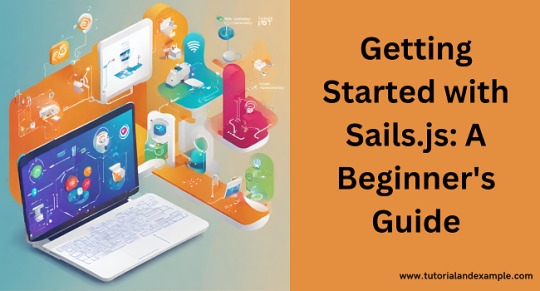
Are you ready to sail into the world of web development? Look no further than our Sails.js Tutorial! Sails.js is a powerful Node.js framework that simplifies building web applications.
First things first, let's understand what Sails.js is all about. It follows the Model-View-Controller (MVC) architecture, making it easy to organize your code and develop scalable applications. Plus, it comes with built-in support for features like real-time updates and RESTful APIs.
To begin your journey with Sails.js, you'll need to have Node.js and npm installed on your computer. Once that's done, you can use npm to install Sails.js globally.
Next, create a new Sails.js project.
Now, you're all set to start coding! Explore the project structure, define your models, create controllers, and develop your views.
But don't worry if you're feeling overwhelmed; our Sails.js Tutorial will guide you every step of the way. Whether you're a beginner or an experienced developer, you'll find valuable insights and practical examples to help you master Sails.js.
So why wait? Embark on your Sails.js journey today with our comprehensive tutorial at Tutorial and Example.
0 notes
Text
Express.js Essentials: A Hands-On Tutorial for Crafting Robust APIs and Web Apps

Are you eager to enhance your web development skills? Look no further than this Express.js tutorial! Express.js, built on top of Node.js, simplifies the creation of web applications and APIs. Let's embark on a journey to understand its fundamentals.
Firstly, grasp the basics of setting up Express.js. Install Node.js and initialize your project. Then, dive into routing. Express.js facilitates route handling, allowing you to define endpoints for various HTTP requests easily.
Next, explore middleware, the backbone of Express.js. Middleware functions execute tasks such as authentication, logging, and error handling. Harness their power to streamline your application's workflow.
Furthermore, delve into template engines like EJS or Pug for dynamic content rendering. With Express.js, rendering HTML becomes a breeze, enabling you to create visually stunning web pages.
Finally, learn about database integration. Connect your Express.js application to databases like MongoDB or MySQL to store and retrieve data seamlessly.
With this Express.js tutorial, you're equipped to embark on exciting web development projects. Visit TutorialAndExample for more in-depth insights and resources on Express.js.
0 notes
Text
Flask Tutorial: Expert Tips and Tricks for Seamless Web Development
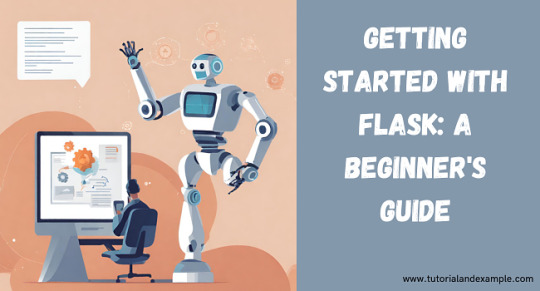
Are you looking to dive into web development but feeling overwhelmed by the options? Look no further than Flask! Flask is a powerful and beginner-friendly web framework for Python. In this Flask tutorial, we'll walk you through the basics to get you started on your journey to becoming a web developer.
First things first, let's set up Flask on your computer. You'll need to have Python installed. Once that's done, installing Flask is as easy as running a single command using pip. With Flask installed, you can start building your first web application.
Flask follows a simple and intuitive structure, making it perfect for beginners. You'll learn how to define routes, create templates, and handle user input. With Flask's built-in development server, you can easily test your application as you go.
But our Flask tutorial doesn't stop there. We'll also cover more advanced topics like database integration, authentication, and deployment. By the end of this tutorial, you'll have the skills and confidence to build your own dynamic web applications with Flask.
Ready to get started? Head over to TAE's Flask Tutorial for a detailed step-by-step guide!
0 notes